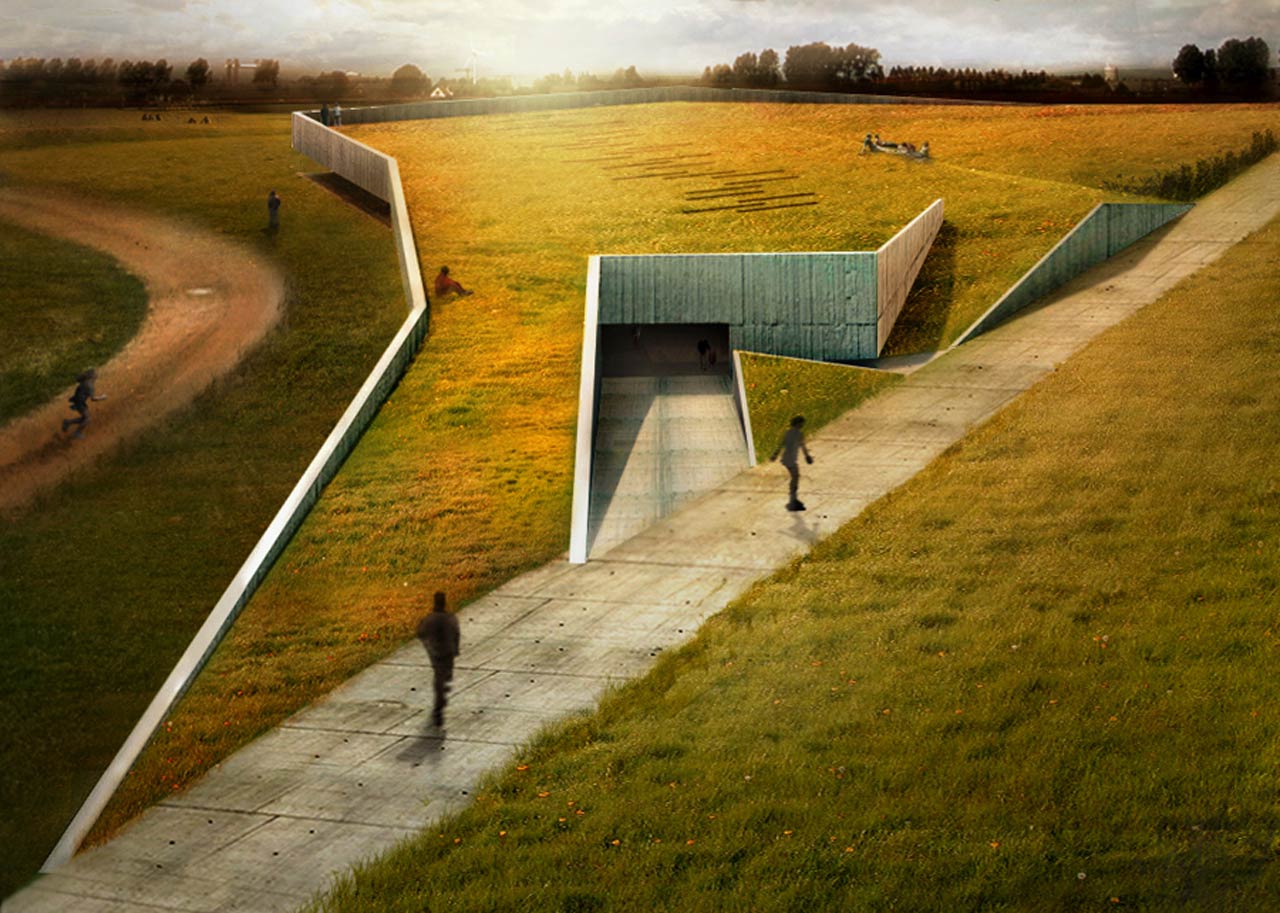Training facility UVV, Utrecht
place: Utrecht
year: 2009
size: 7.775 m2
status: DO
client: UVV
team: Remko Remijnse, Rocco Reukema, Isabel Rivas
Baseball has recently surged in popularity in The Netherlands, particularly following the nation’s triumph at the 2011 world championship. This victory has significantly bolstered the sport’s prominence within the country. However, despite these advancements and accomplishments, the baseball infrastructure in The Netherlands still lags notably behind that of other sports such as football, as well as behind the facilities available in countries like the United States. In a move to nurture and support emerging talent, the UVV baseball club in Utrecht has enlisted the services of 2by4-architects to design both a new stadium and a modern training facility.
The proposed site for the new training facility is uniquely positioned, bordered on one side by a natural landscape and on the other by existing baseball fields. A significant portion of the facility is planned to be constructed underground. This design choice minimizes its visual impact on the natural surroundings, preventing it from dominating the landscape with a large, intrusive structure. Instead, a modest façade will face the natural landscape, from which a green roof will slope gently down towards the baseball fields. This roof is envisaged as a communal area where spectators can gather to watch the games. By situating part of the training hall below ground, 2by4-architects aim to fulfill two key requests from the baseball club: the creation of additional public space and the construction of a highly sustainable building.
The new stadium is envisioned to encircle the main baseball field. Initially, the stadium will be modest in scale, accommodating spaces for spectators, press rooms, dressing rooms, a lobby, shops, and a VIP lounge. As the sport’s popularity and the club’s following expand, the stadium can be enlarged to become a full-sized baseball venue. This adaptable approach allows the club to develop at its own pace, making adjustments to its facilities as needed to accommodate growth and increasing interest in the sport.



